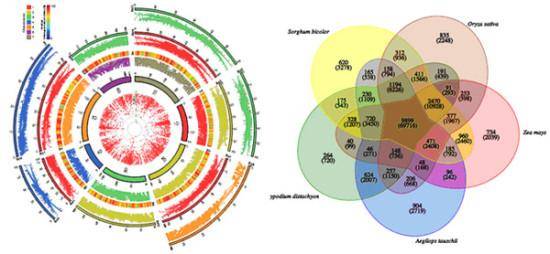学 Python 怎样才最快,当然是实战各种小项目,只有自己去想与写,才记得住规则。今天给大家分享的是 30 个极简任务,初学者可以尝试着自己实现;本文同样也是 30 段代码,Python 开发者也可以看看是不是有没想到的用法。
1. 重复元素判定
以下方法可以检查给定列表是不是存在重复元素,它会使用 set 函数来移除所有重复元素。
defall_unique(lst):
returnlen(lst) == len(set(lst))
x = [ 1, 1, 2, 2, 3, 2, 3, 4, 5, 6]
y = [ 1, 2, 3, 4, 5]
all_unique(x) # False
all_unique(y) # True
2. 字符元素组成判定
检查两个字符串的组成元素是不是一样的。
fromcollections importCounter
defanagram(first, second):
returnCounter(first) == Counter(second)
anagram( "abcd3", "3acdb") # True
3. 内存占用
下面的代码块可以检查变量 variable 所占用的内存。
importsys
variable = 30
print(sys.getsizeof(variable)) # 24
4. 字节占用
下面的代码块可以检查字符串占用的字节数。
defbyte_size(string):
return(len(string.encode( 'utf-8')))
byte_size( '😀') # 4
byte_size( 'Hello World') # 11
5. 打印 N 次字符串
该代码块不需要循环语句就能打印 N 次字符串。
n = 2;
s = "Programming";
print(s * n);
# ProgrammingProgramming
6. 大写第一个字母
以下代码块会使用 title 方法,从而大写字符串中每一个单词的首字母。
s = "programming is awesome"
print(s.title)
# Programming Is Awesome
7. 分块
给定具体的大小,定义一个函数以按照这个大小切割列表。
frommath importceil
defchunk(lst, size):
returnlist(
map( lambdax: lst[x * size:x * size + size],
list(range( 0, ceil(len(lst) / size)))))
chunk([ 1, 2, 3, 4, 5], 2)
# [[1,2],[3,4],5]
8. 压缩
这个方法可以将布尔型的值去掉,例如 (False, None, 0, "") ,它使用 filter 函数。
defcompact(lst):
returnlist(filter(bool, lst))
compact([ 0, 1, False, 2, '', 3, 'a', 's', 34])
# [ 1, 2, 3, 'a', 's', 34 ]
9. 解包
如下代码段可以将打包好的成对列表解开成两组不同的元组。
array = [[ 'a', 'b'], [ 'c', 'd'], [ 'e', 'f']]
transposed = zip(*array)
print(transposed)
# [('a', 'c', 'e'), ('b', 'd', 'f')]
10. 链式对比
我们可以在一行代码中使用不同的运算符对比多个不同的元素。
a = 3
print( 2< a < 8) # True
print( 1== a < 2) # False
11. 逗号连接
下面的代码可以将列表连接成单个字符串,且每一个元素间的分隔方式设置为了逗号。
hobbies = [ "basketball", "football", "swimming"]
print( "My hobbies are: "+ ", ".join(hobbies))
# My hobbies are: basketball, football, swimming
12. 元音统计
以下方法将统计字符串中的元音 (‘a’, ‘e’, ‘i’, ‘o’, ‘u’) 的个数,它是通过正则表达式做的。
importre
defcount_vowels(str):
returnlen(len(re.findall( r'[aeiou]', str, re.IGNORECASE)))
count_vowels( 'foobar') # 3
count_vowels( 'gym') # 0
13. 首字母小写
如下方法将令给定字符串的第一个字符统一为小写。
defdecapitalize(string):
returnstr[: 1].lower + str[ 1:]
decapitalize( 'FooBar') # 'fooBar'
decapitalize( 'FooBar') # 'fooBar'
14. 展开列表
该方法将通过递归的方式将列表的嵌套展开为单个列表。
defspread(arg):
ret = []
fori inarg:
ifisinstance(i, list):
ret.extend(i)
else:
ret.append(i)
returnret
defdeep_flatten(lst):
result = []
result.extend(
spread(list(map( lambdax: deep_flatten(x) iftype(x) == list elsex, lst))))
returnresult
deep_flatten([ 1, [ 2], [[ 3], 4], 5]) # [1,2,3,4,5]
15. 列表的差
该方法将返回第一个列表的元素,其不在第二个列表内。如果同时要反馈第二个列表独有的元素,还需要加一句 set_b.difference(set_a) 。
defdifference(a, b):
set_a = set(a)
set_b = set(b)
comparison = set_a.difference(set_b)
returnlist(comparison)
difference([ 1, 2, 3], [ 1, 2, 4]) # [3]
16. 通过函数取差
如下方法首先会应用一个给定的函数,然后再返回应用函数后结果有差别的列表元素。
defdifference_by(a, b, fn):
b = set(map(fn, b))
return[item foritem ina iffn(item) notinb]
frommath importfloor
difference_by([ 2.1, 1.2], [ 2.3, 3.4],floor) # [1.2]
difference_by([{ 'x': 2}, { 'x': 1}], [{ 'x': 1}], lambdav : v[ 'x'])
# [ { x: 2 } ]
17. 链式函数调用
你可以在一行代码内调用多个函数。
defadd(a, b):
returna + b
defsubtract(a, b):
returna - b
a, b = 4, 5
print((subtract ifa > b elseadd)(a, b)) # 9
18. 检查重复项
如下代码将检查两个列表是不是有重复项。
defhas_duplicates(lst):
returnlen(lst) != len(set(lst))
x = [ 1, 2, 3, 4, 5, 5]
y = [ 1, 2, 3, 4, 5]
has_duplicates(x) # True
has_duplicates(y) # False
19. 合并两个字典
下面的方法将用于合并两个字典。
defmerge_two_dicts(a, b):
c = a.copy # make a copy of a
c.update(b) # modify keys and values of a with the ones from b
returnc
a = { 'x': 1, 'y': 2}
b = { 'y': 3, 'z': 4}
print(merge_two_dicts(a, b))
# {'y': 3, 'x': 1, 'z': 4}
在 Python 3.5 或更高版本中,我们也可以用以下方式合并字典:
defmerge_dictionaries(a, b)
return{** a, ** b}
a= { ' x': 1, 'y': 2}
b = { 'y': 3, 'z': 4}
print(merge_dictionaries(a, b))
# {'y': 3, 'x': 1, 'z': 4}
20. 将两个列表转化为字典
如下方法将会把两个列表转化为单个字典。
defto_dictionary(keys, values):
returndict(zip(keys, values))
keys = [ "a", "b", "c"]
values = [ 2, 3, 4]
print(to_dictionary(keys, values))
# {'a': 2, 'c': 4, 'b': 3}
21. 使用枚举
我们常用 For 循环来遍历某个列表,同样我们也能枚举列表的索引与值。
list = [ "a", "b", "c", "d"]
forindex, element inenumerate(list):
print( "Value", element, "Index ", index, )
# ('Value', 'a', 'Index ', 0)
# ('Value', 'b', 'Index ', 1)
#('Value', 'c', 'Index ', 2)
# ('Value', 'd', 'Index ', 3)
22. 执行时间
如下代码块可以用来计算执行特定代码所花费的时间。
importtime
start_time = time.time
a = 1
b = 2
c = a + b
print(c) #3
end_time = time.time
total_time = end_time - start_time
print( "Time: ", total_time)
# ('Time: ', 1.1205673217773438e-05)
23.Try else
我们在使用 try/except 语句的时候也可以加一个 else 子句,如果没有触发错误的话,这个子句就会被运行。
try:
2*3
except TypeError:
print( "An exception was raised")
else:
print( "Thank God, no exceptions were raised.")
#Thank God, no exceptions were raised.
24. 元素频率
下面的方法会根据元素频率取列表中最常见的元素。
defmost_frequent(list):
returnmax(set(list), key = list.count)
list = [ 1, 2, 1, 2, 3, 2, 1, 4, 2]
most_frequent(list)
25. 回文序列
以下方法会检查给定的字符串是不是回文序列,它首先会把所有字母转化为小写,并移除非英文字母符号。最后,它会对比字符串与反向字符串是否相等,相等则表示为回文序列。
defpalindrome(string):
fromre importsub
s = sub( '[\W_]', '', string.lower)
returns == s[:: -1]
palindrome( 'taco cat') # True
26. 不使用 if-else 的计算子
这一段代码可以不使用条件语句就实现加减乘除、求幂操作,它通过字典这一数据结构实现:
importoperator
action = {
"+": operator.add,
"-": operator.sub,
"/": operator.truediv,
"*": operator.mul,
"**": pow
}
print(action[ '-']( 50, 25)) # 25
27.Shuffle
该算法会打乱列表元素的顺序,它主要会通过 Fisher-Yates 算法对新列表进行排序:
fromcopy importdeepcopy
fromrandom importrandint
defshuffle(lst):
temp_lst = deepcopy(lst)
m = len(temp_lst)
while(m):
m -= 1
i = randint( 0, m)
temp_lst[m], temp_lst[i] = temp_lst[i], temp_lst[m]
returntemp_lst
foo = [ 1, 2, 3]
shuffle(foo) # [2,3,1] , foo = [1,2,3]
28. 展开列表
将列表内的所有元素,包括子列表,都展开成一个列表。
defspread(arg):
ret = []
fori inarg:
ifisinstance(i, list):
ret.extend(i)
else:
ret.append(i)
returnret
spread([ 1, 2, 3,[ 4, 5, 6],[ 7], 8, 9]) # [1,2,3,4,5,6,7,8,9]
29. 交换值
不需要额外的操作就能交换两个变量的值。
defswap(a, b):
returnb, a
a, b = -1, 14
swap(a, b) # (14, -1)
spread([ 1, 2, 3,[ 4, 5, 6],[ 7], 8, 9]) # [1,2,3,4,5,6,7,8,9]
30. 字典默认值
通过 Key 取对应的 Value 值,可以通过以下方式设置默认值。如果 get 方法没有设置默认值,那么如果遇到不存在的 Key,则会返回 None。
d = { 'a': 1, 'b': 2}
print(d.get( 'c', 3)) # 3
来源:towardsdatascience
作者:Fatos Morina
编辑:机器之心
原文:
https://towardsdatascience.com/30-helpful-python-snippets-that-you-can-learn-in-30-seconds-or-less-69bb49204172
END
社区话题
本期讨论:
1. 你的薪资在你所在的城市,算是什么水平?够用吗?
2. 有些人觉得,北上广搞硬件、搞嵌入式20K不如二线城市的15K过得滋润。你又怎么想?
所有参与者将获得:20个 E币
优秀回答将获得:300个E币
活动时间:2023/07/25 - 2023/08/31
加入工程师工作吐槽群
点击阅读原文,参与讨论 返回搜狐,查看更多
责任编辑:
